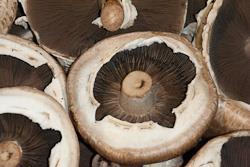
Australian mushroom consumption figures have been no slouch over the last few decades, but an industry promotion planned for next year is hoping to push them even further based on research into mushrooms’ health properties.
Per capita consumption in the country has been on a steady rise for the last 30 years, according to Greg Seymour, general manager of peak body the Australian Mushroom Growers’ Association.
“The stunning thing over time has just been the continuing love affair that Australians have with mushrooms,” he told Fruitnet.com.
The Australian mushroom market is around 73,000 tonnes annually, including imports, which are mostly canned Agaricus-genus mushrooms from China. Australia imports almost no fresh mushrooms, according to Mr Seymour, and neither does it export much.
The market for domestic production is around 65,000 tonnes, almost all fresh, with 98-99 per cent of the market comprised of Agaricus; white and brown Buttons and Portobello mushrooms.
While production of exotic mushrooms has increased in recent years, their share of the market has shrunk because of increasing Button mushroom consumption. Mr Seymour said that’s largely a promotion issue, with exotics not covered by generic industry promotion levies.
“Right now in Australia we eat about one mushroom every three days,” said Mr Seymour. “We’re trying to encourage people to eat three mushrooms every day, and we’re doing a campaign on that next year.”
The next wave of consumption in Australia will come from research into the health benefits of mushrooms, predicted Mr Seymour. He said in Asian countries like China with high consumption levels, mushrooms are understood to be healthy as part of the traditional culture.
“`But` in the West we need scientific research to show the benefits,” he said. “We’re investing as an industry in research. All our research is based on eating 100g a day, and there are already stunning results for Alzheimer’s, heart disease and cancer.”
One of the big stories for mushrooms’ health rep recently is vitamin D. Recent research has shown exposing mushrooms to UV light after harvesting boosts vitamin D levels in mushrooms, meaning 100g of treated mushrooms can give in excess of 100 per cent of daily requirements.
“Vitamin D deficiency will turn out to be one of the major health issues of the next decade,” said Mr Seymour. “So vitamin D mushrooms are going to be the next big product.
“We’re going to bring that to public, and consumption will skyrocket. That’s going to be the driver of the next level of the Australian love affair with mushrooms. It’s a relatively cheap food for the benefits, and it’s a unique food in own category.”
The industry will begin test marketing in September this year, and the main promotional effort is set to kick off in July next year.



